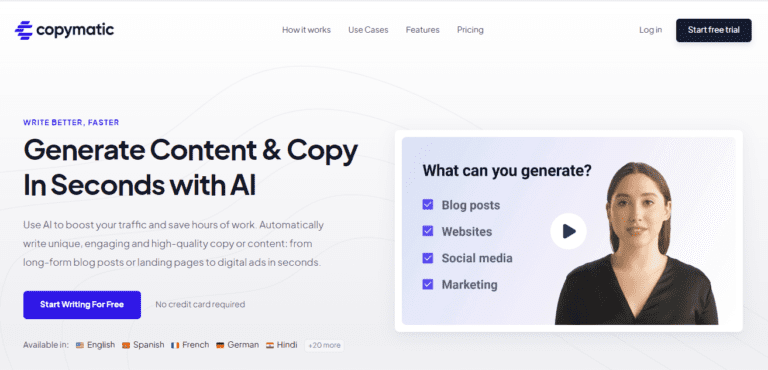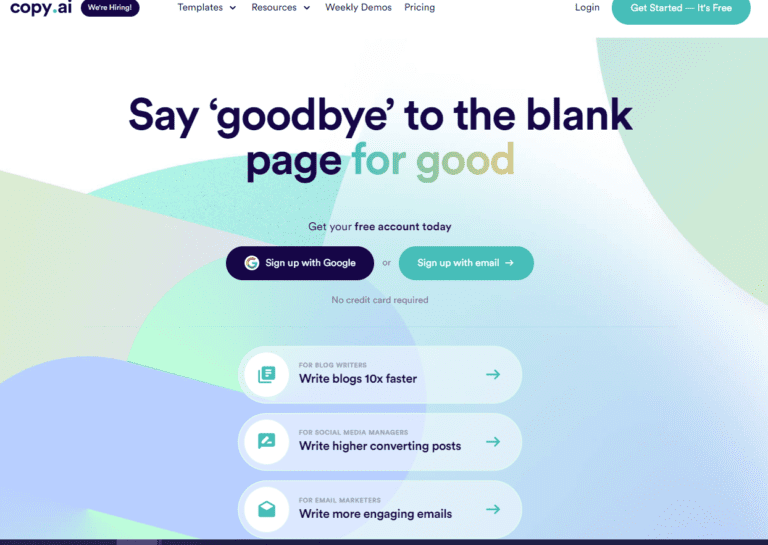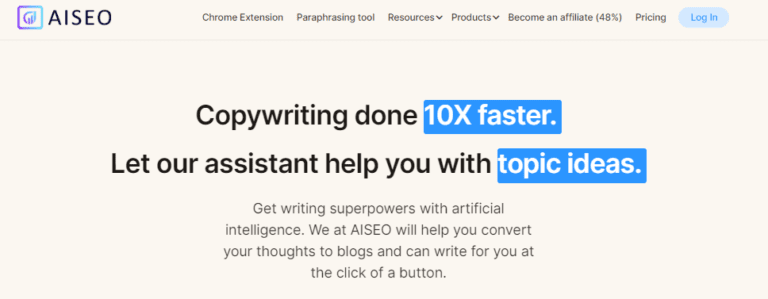Top 5 AI Challenges: How To Protect Our Future
AI is a broad term that covers a wide range of technologies, including machine learning, natural language processing, and computer vision. Basically, AI refers to any software that can simulate human intelligence and perform tasks that would typically require a human being.
Some common examples of AI include virtual assistants like Siri and Alexa, chatbots, and recommendation engines like those used by Netflix and Amazon. As you can see, AI is already embedded in many aspects of our lives without us even realizing it.
AI has come a long way in recent years, but there are still many AI challenges that need to be addressed before it can truly be considered a mature technology.
In this blog post, we’ll take a look at the top 5 challenges facing AI today: data bias, robustness and reliability, demand, jobs and the economy, and regulation.
AI Challenges – # 1: Data Bias In Algorithms
As AI becomes increasingly commonplace, it’s important to consider the potential dangers of data bias in algorithms. AI is powerful and can do wonderful things. But it can also compound the existing bias and soon get to a point of no return.
Data bias occurs when an algorithm favors one group of people over another. This could be due to a number of factors, such as the training data that was used to build the algorithm being biased against a particular group.
As we build new AI products, we must use ethical reasoning and not just logical reasoning. Product Managers need to include ethical inputs, and not just business/financial inputs as they build the AI solutions.
For example, if an AI algorithm is trained on historical data that is biased against minorities, then the algorithm will likely be biased against minorities as well.
Data bias can also occur when an algorithm is trying to predict something about a group of people, but fails to do so accurately because it doesn’t have enough data about that group.
These existing biases are then amplified by AI systems that use these algorithms. The result is a self-fulfilling cycle of discrimination. We need to be careful about the Data we feed into our AI systems and make sure it’s from a variety of sources that isn’t biased.
For example, many algorithms in the financial services industry already are biased against minorities (low income, single parents and other minorities) because people fed the existing biased dataset into the AI systems.
It’s important to continually test your AI system for data bias and correct for it if necessary. Failing to do so could result in disastrous consequences for those who are already marginalized by society.
AI Challenges – # 2: Building More Robust and Reliable AI Systems
Artificial intelligence (AI) has come a long way in recent years, but there is still a long way to go before it can be considered robust and reliable enough for many real-world applications.
When we talk about robust & reliable AI technology, we’re referring to technology that functions well always and is also able to handle unexpected inputs and situations. For example, if you were asking a chatbot about the weather and it suddenly started talking about politics, that would not be considered robust.
Another example of a robust AI system would be one that is able to continue functioning in the event of a power outage or system crash. Or an AI system that is able to correct for data bias and learn from its mistakes.
AI is used everywhere from self-driving to launching rockets. In these high-stakes situations, it’s crucial that we build robust and reliable AI systems to prevent accidents and errors.
One way to improve the robustness and reliability of AI systems is through better testing methods. This includes testing for potential edge cases and unexpected inputs, as well as testing for data bias.
Another important step is to continually monitor and update AI systems as new information and data becomes available, so that they can adapt and improve over time.
But we have a long way to go here. Currently, many chatbots are not even very good at understanding user intent, which leads to frustrating conversations.
‘Can I please talk to a human being’ is a popular chatbot command these days. The chatbots simply have not been programmed to give up and keep suggesting something ridiculous.
AI Challenges – # 3: Demand for AI-powered Services
We’ve all heard it said that data is the new oil. And it’s true; data is becoming increasingly valuable as we rely on it more and more to make decisions in our personal and professional lives.
But what is often overlooked is the role that artificial intelligence (AI) plays in helping us to make sense of all this data.
As the amount of data continues to grow exponentially, we will need AI to help us sift through it and find the nuggets of gold that can help us improve our businesses, our products, and our lives.
This demand for AI-powered services is only going to increase in the coming years, and those who are able to provide these services will be in a prime position to reap the rewards.
So why is there such a demand for AI-powered services? There are really three main benefits that businesses are looking for when they turn to AI: efficiency, accuracy, and scale – in other words – PROFIT!
Efficiency:
First and foremost, businesses are always looking for ways to be more efficient in their operations. By using AI to automate tasks like customer service or data entry, businesses can free up their employees to focus on more important tasks.
In addition, AI can help businesses to make better use of their resources by identifying areas where they can save money or time.
Accuracy:
Another top concern for businesses is accuracy. When making important decisions, businesses want to be sure that they’re basing those decisions on accurate data. By using AI to collect and analyze data, businesses can be confident that they’re making decisions based on the most up-to-date and complete information available.
Scale:
Finally, businesses are also looking for ways to scale their operations quickly and efficiently without incurring a lot of additional costs. This is where AI really shines; because it doesn’t get tired and doesn’t need breaks like humans do, it can handle large volumes of data much more efficiently than humans ever could.
The demand for AI-powered services is only going to increase in the coming years as businesses look for ways to become more efficient, accurate, and scalable. Those who are able to provide these services will be in a prime position to reap the rewards.
AI Challenges – # 4: Impact on jobs and Economy
As artificial intelligence continues to make inroads in industries ranging from healthcare to finance, there is no shortage of people who are concerned about its impact on employment.
After all, if a machine can do a job just as well or better than a human, why would anyone want to hire a human?
The truth, however, is that while AI will almost certainly lead to some jobs being eliminated, it will also create new opportunities. The net effect on employment is difficult to predict, but what is certain is that the rise of AI will have a profound impact on the economy.
Here’s what you need to know about the potential impact of AI and how you can stay ahead of the curve.
AI will transform our economy, we aren’t sure how
The impact of AI on jobs is a complex and hotly debated topic. Some experts believe that AI will lead to mass unemployment, while others believe that it will create new opportunities for humans. The truth is that we simply don’t know what the future holds.
What we do know, however, is that AI will have a profound impact on the economy. For example, if machines can do a job just as well or better than a human, businesses will be more likely to replace human workers with machines. This could lead to mass unemployment and have a negative impact on the economy.
On the other hand, if AI leads to the development of new and innovative products and services, it could create new opportunities for humans and have a positive impact on the economy. The bottom line is that we cannot predict the exact impact of AI on employment, but we can be sure that it will be significant.
We need to start preparing for the potential impact of AI now
AI is developing at a rapid pace. We do not have the luxury of waiting to see how it will impact the economy before taking action. We need to start preparing now for the potential impact of AI on employment. Here’s a few ways to do that:
Understand What AI Is & how it impacts you
Maybe you are someone who doesn’t think AI will impact your job, but it’s important to understand what AI is and how it could potentially impact your industry in the future.
There is hardly any industry where AI won’t have some impact, so it’s important to stay informed and stay ahead of the curve.
If you are a programmer, consider learning about AI and how it can be used in your industry. If you are a business owner, consider investing in AI education for yourself and your employees.
If you are a content creator, understand how AI writing tools like grammar checkers and AI-powered content generators could impact your industry.
Embrace the future of AI and upskill
Although it can be scary to think about AI potentially taking over our jobs, it’s important to embrace the future and not resist it. Instead, consider how you can upskill and adapt to the changes that AI will bring.
For example, if you are a factory worker, consider how you can learn new skills, such as coding and operating AI-powered machinery, to stay employable in the future.
If you are a software tester, consider learning about AI testing and how it can enhance your job performance.
Advocate for policies that support a smooth transition to an AI-powered economy
As AI continues to develop and impact the economy, it’s important to advocate for policies that support a smooth transition. This could include retraining programs for workers whose jobs are affected by AI, as well as policies that ensure fair and ethical use of AI.
By understanding the potential impact of AI, upskilling to adapt to the changes it will bring, and advocating for policies that support a smooth transition, we can better prepare for the future of AI in our economy.
Prepare for the AI powered future
Stay informed and stay ahead of the curve, before it’s too late. It’s time to start preparing for the potential impact of AI on the economy and our jobs.
The future impact of artificial intelligence on the economy is still largely unknown. What is certain, however, is that it has the potential to be profoundly disruptive. To stay ahead of the curve, we need to start preparing for the potential impact of AI now.
One way to do this is by retraining workers who may be displaced by AI-powered automation for new jobs in sectors where demand for labor is expected to increase.
Another way to stay ahead of the curve is by investing in education and training that will ensure that our future workforce has the skills necessary to thrive in an increasingly automated world.
AI Challenges – # 5: Regulating the Monster
The definition of AI
The first challenge in regulating AI is defining what AI is. There is no single agreed-upon definition of AI, which makes it difficult to develop regulations that are specific to AI. Additionally, the definition of AI is constantly changing as new technologies are developed.
As such, any regulations that are developed will need to be regularly updated in order to keep up with the latest advances in AI.
The impact of AI on society
Another challenge in regulating AI is the impact that it will have on society. AI has the potential to drastically change the way that we live and work like eliminating diseases, improving crop yield etc.,
But it could also lead to large-scale job losses as automation increasingly replaces human workers. As such, any regulations that are developed need to take into account the potential societal impacts of AI.
The speed of development
Another challenge in regulating AI is the speed at which it is being developed. Due to the rapid pace of development, it is difficult for regulators to keep up with the latest advances in AI.
This could lead to regulations that are outdated or not specific enough to be effective.
The global nature of AI
AI is also a global phenomenon, which presents challenges for regulating it. Due to the borderless nature of the internet, AI technologies can be developed and used anywhere in the world.
This makes it difficult for any one country or region to effectively regulate AI.
The lack of understanding about AI
Finally, another challenge in regulating AI is the lack of understanding about it among both policymakers and the general public. Due to its complex nature, many people do not fully understand how AI works or its potential implications.
This lack of understanding makes it difficult to develop effective regulation and also to gain public support for such regulation.
Overall, regulating AI presents a number of challenges and will require careful consideration in order to effectively address the potential impacts of this rapidly evolving technology.
Conclusion
So far, we have looked at the challenges of regulating AI. These challenges include the definition of AI, the impact of AI on society, the speed of development, and the lack of understanding about it among policymakers and the general public.
In order to ensure that AI is used fairly and ethically, we need to be proactive in understanding the potential impact of AI on our economy and society. We also need to advocate for policies that will support a smooth transition into an AI-powered future.
There are significant challenges in adopting to a world powered by AI. But despite these challenges, it is important for us to develop regulations around artificial intelligence so that we can maximize its benefits while minimizing its negative impacts.





